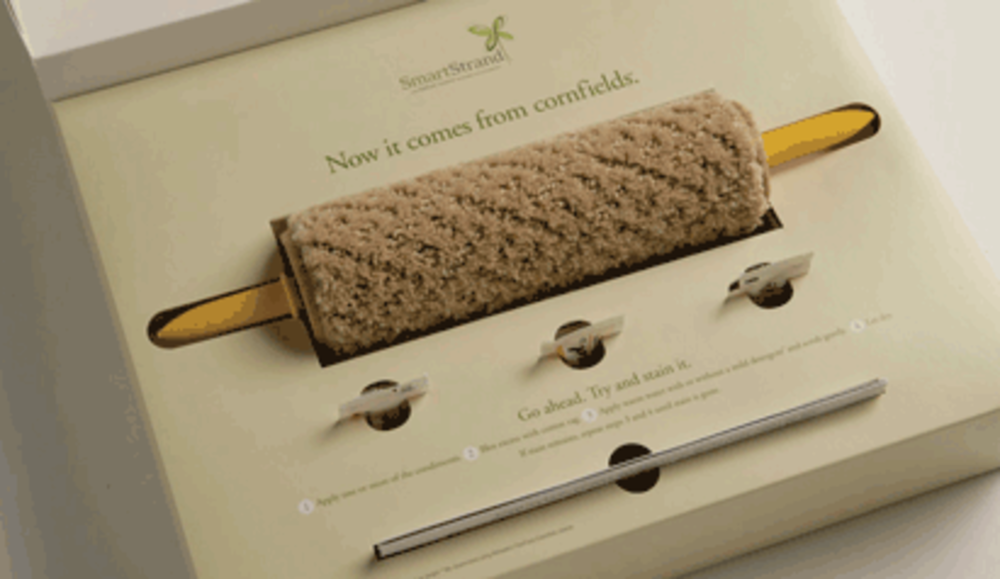Consumers seek products that are good for the environment, as long as green choices don’t make a dent in their wallets. In response, marketers are trying to promote sustainability messages that are meaningful to consumers, economical and effective at driving immediate sales.
A new survey from WSL Strategic Retail indicates that inexpensive ways to go green have caught on: 68% of respondents said they are purchasing energy saving light bulbs. By comparison, some eco-friendly investments such as water-saving devices haven’t gained any momentum due to higher price points.
Whatever the price point, “marketers have struggled with how to tell the sustainability story,” says Seth Farbman, president at OgilvyEarth, marketing agency Ogilvy’s sustainability practice.
“Green marketing doesn’t feel very personal at times,” he says, pointing to messages that focus on saving the earth but don’t say anything about what benefit there is to the buyer purchasing the product or service. Being able to draw a personal connection is a powerful marketing tactic and without this element, many green marketing campaigns have missed the mark, he notes.
Another reason why green marketing hasn’t always been effective is that some marketers may have perceived an opportunity to enhance their brand through eco-friendly messaging and overreached, making claims that couldn’t be substantiated or weren’t meaningful to customers, says Fred Hernandez, marketing manager at Modern Postcard. Now, companies realize that “being green is being smart when it comes to marketing,” he notes. One way marketers can do this, he says, is by keeping mailing lists clean — thus being able to say that they cut down on unwanted mail.
Marketers find that direct mail can be a strong choice for delivering a green message because of its tangible nature, says Farbman.
“One of the benefits of anything made of paper is that it is very tactile and you interact with it,” he notes.
Last year, OgilvyEarth developed an acquisition campaign for DuPont to promote a new carpet containing a renewably sourced fiber that included a multidimensional mailing with a product sample. This allowed recipients to experience the benefits of the product while also delivering its sustainability message.
Retention: Aveda
While Aveda regularly sends postcards to customers with special offers and new products, around the holiday season the beauty care company invests in a larger direct mail piece to tout its sustainability efforts in detail.
“From past experience, we know that our guests love the fact that we are a high-performing beauty brand but, at the same time, it is equally important that they know that their purchases are making a difference in the world,” says Rachel Ostrom, director of consumer marketing and advertising at Aveda.
For the 2009 holiday mailer, the sustainability message – which talked about Aveda’s work in Nepal – was even more prominently featured than past years, says Ostrom.
The thing that resonated with our guests was that we were able to talk about our results,” she notes, which include helping to raise the household income and sending children to school. The company mailed 340,000 of these mail pieces.
In addition, Aveda followed up with an e-mail message from the company’s president discussing additional elements of the sustainability message. It linked to the company’s holiday video showcasing its efforts in Nepal. There was also a second e-mail message with links to more information on Facebook and YouTube.
“We kicked off the campaign with the direct mail because we do historically see the highest response rates in our stores from these pieces,” says Ostrom. “Then we post the message in a slightly different way in different channels throughout the holiday season, which continues to bring people into our stores.”
The direct mail piece had an over 10% response rate and Aveda reported an 82% year-over-year increase in sales for the month of December.
Acquisition: DuPont
DuPont joined OgilvyEarth on a multitouch acquisition campaign during the second quarter of 2009 to help introduce a new carpet made from renewable resources called SmartStrand with DuPont Sonora.
The key fiber in SmartStrand is made from corn sugar, a renewable resource. SmartStrand offers softness, durability and stain protection that is comparable to other carpets. Its production also requires fewer resources than the petroleum-based fibers used in many commercial carpets.
DuPont needed a way to communicate both the product’s environmental message as well as its consumer benefits. With this in mind, OgilvyEarth developed a mock ear of corn on the cob, with the cob part made from SmartStrand carpet. These cobs were placed inside crates of corn that were hand-delivered to journalists and dimensional mailers that were sent to prospects. The dimensional mailers also included packets of condiments which could be applied to the carpet to demonstrate its stain-resistance. Other elements of the campaign included a Web site and e-mail blasts.
“The carpet has obvious advantages, but to tell someone it is made from corn might bring up images of inferior quality,” says Seth Farbman, president at OgilvyEarth. “Until you experience it yourself, it is hard to make the connection,” which is why direct mail was a very effective vehicle for this campaign, he continues.
Receiving an ear of corn made out of carpet clearly expressed the environmental benefit of the carpet to recipients while also delivering some of the emotional, sensorial value. This is important because consumers aren’t willing to give up performance to help save the earth, says Farbman.
“It is critical in green marketing that consumers are able to buy a product that is good for the earth, but is also better for them,” he says.







